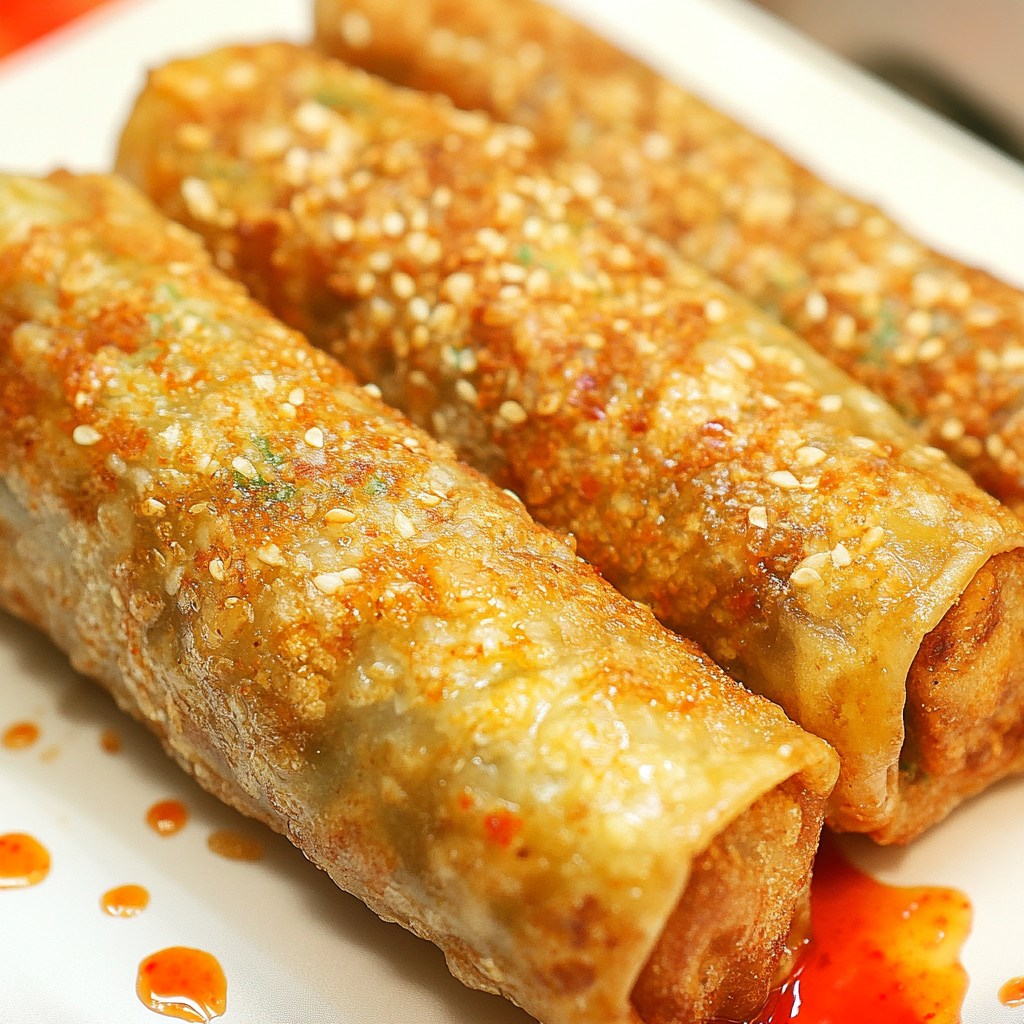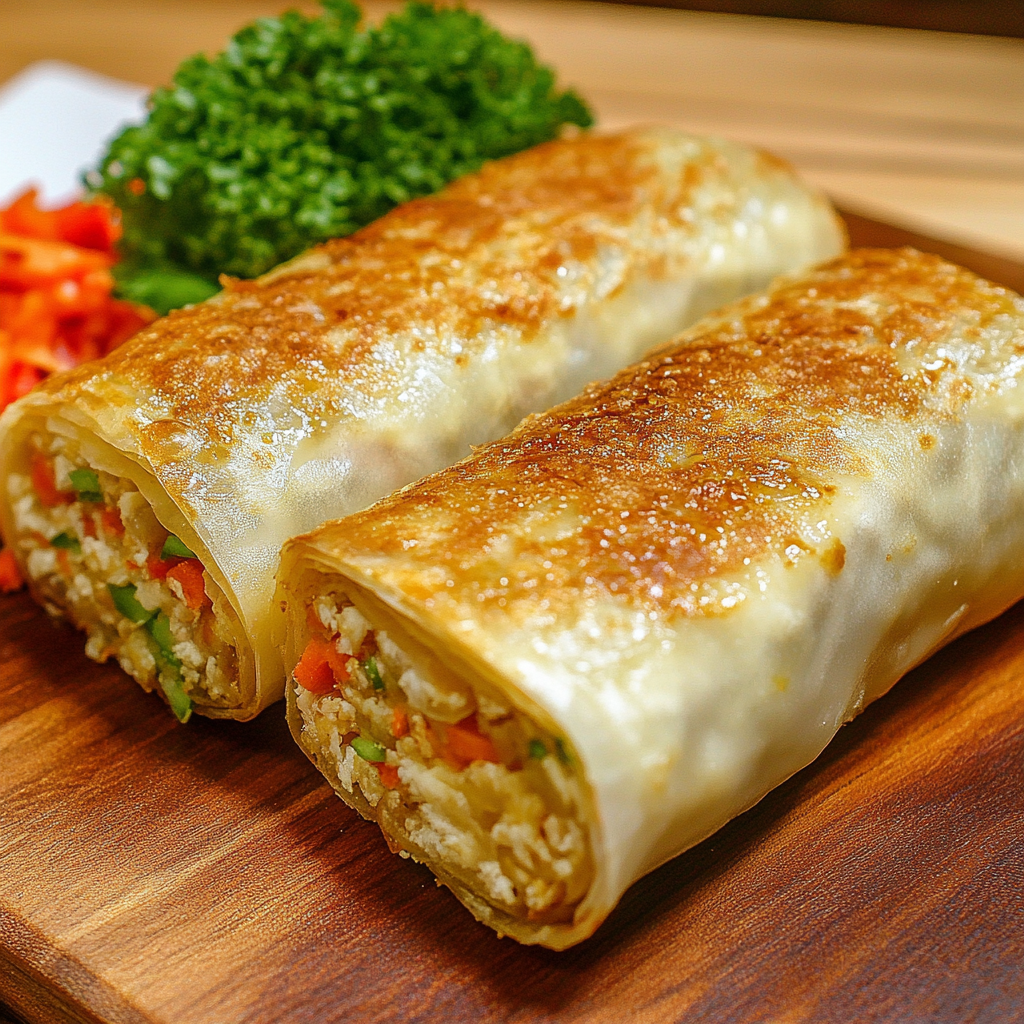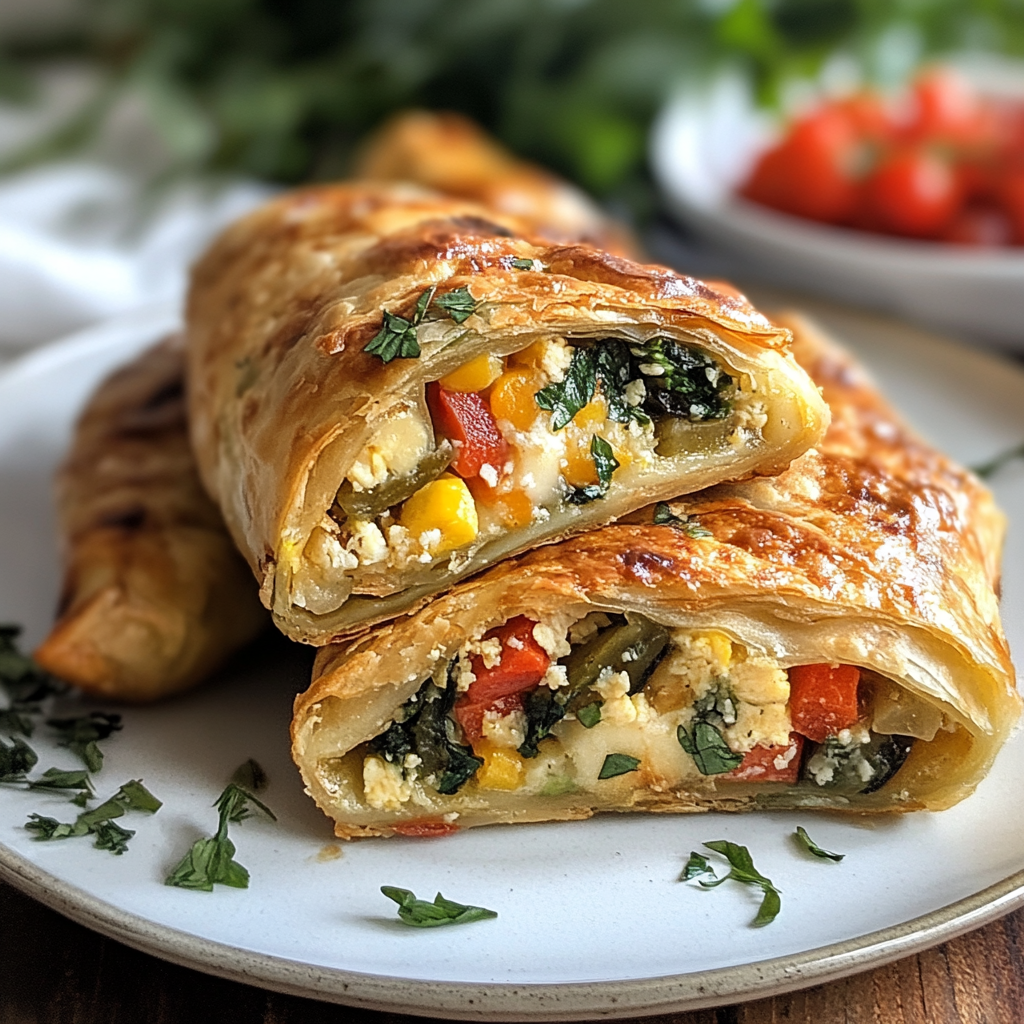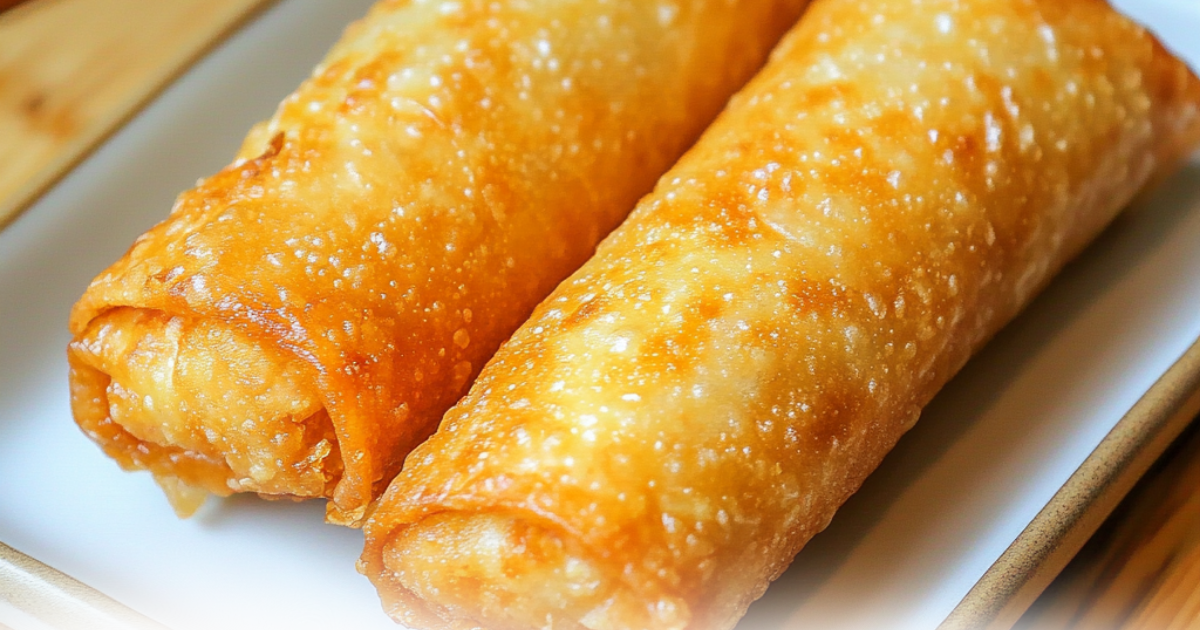Egg rolls are a beloved dish worldwide, known for their crispy exteriors and flavorful fillings. While these rolls are often associated with takeout, they’re surprisingly easy to make at home. The magic lies in the variety of vegetables you can use to craft a filling that’s both delicious and visually appealing. But what kind of vegetables do you put in egg rolls? This article will walk you through the most common ingredients, unique options, and expert techniques to create the ultimate egg rolls. Let’s dive into the world of veggie-packed goodness!
Table of contents
Understanding the Basics of Vegetable Egg Rolls
What Are Vegetable Egg Rolls?
Vegetable egg rolls are a crispy, golden appetizer or snack commonly found in Asian cuisine. Wrapped in thin dough, they’re filled with a flavorful mix of shredded vegetables and seasonings. Unlike their meaty counterparts, these rolls focus on the fresh, vibrant flavors of veggies, making them a favorite among vegetarians and health-conscious eaters.
Traditionally, vegetable egg rolls are deep-fried, which gives them their signature crunch. However, baked or air-fried versions have become popular for those looking for a lighter option. Whether you serve them as a side dish or a main course, their versatility is unmatched.

Key Components: The Wrapper and Filling
At the heart of any great egg roll are its two main components: the wrapper and the filling. The wrappers are typically made from flour and water, creating a delicate yet sturdy shell to hold the filling. These are widely available in grocery stores, often labeled as spring roll wrappers or egg roll wrappers.
The filling, however, is where creativity shines. While classic recipes rely on cabbage, carrots, and scallions, there’s no limit to what you can include. The key is balancing textures and flavors—crispy, tender, sweet, and savory all wrapped into one bite. Pre-cooking the vegetables and seasoning them with staples like soy sauce, garlic, and ginger ensures the filling is flavorful and not overly moist, which is crucial for avoiding soggy rolls.
Common Vegetables Found in Egg Rolls
Cabbage: The Staple Ingredient
When asking what kind of vegetables do you put in egg rolls, cabbage is the undeniable star. This leafy vegetable is a classic choice, thanks to its mild flavor and satisfying crunch. Both Napa cabbage and green cabbage work well, though Napa adds a touch of sweetness. Cabbage is easy to shred and cooks quickly, making it ideal for stir-frying. Plus, its ability to soak up seasonings like soy sauce and sesame oil ensures a flavorful filling.

Carrots: Adding Color and Sweetness
Carrots bring a pop of color and natural sweetness to your egg rolls. They’re best cut into thin strips or shredded, which helps them cook evenly and blend seamlessly with other ingredients. Whether stir-fried or left slightly crunchy, carrots complement the savory notes of scallions and garlic. If you’re going for a traditional look and taste, don’t skip this vibrant veggie.
Scallions: A Mild Onion Flavor
Scallions, or green onions, are a subtle yet important addition. Their mild onion flavor pairs perfectly with the more robust notes of cabbage and carrots. When thinly sliced, they distribute evenly throughout the filling, adding just enough zing to every bite. Scallions also maintain a slight crunch, even after cooking, enhancing the overall texture.
Mushrooms: Richness and Texture
For a deeper, umami-rich flavor, mushrooms are a fantastic option. Varieties like button, shiitake, or wood ear mushrooms are commonly used. Not only do they add a meaty texture, but they also soak up seasonings beautifully. Slice them thinly and sauté with a dash of ginger and garlic for a flavorful twist.
Bean Sprouts: Crunchy and Fresh
Bean sprouts bring freshness and a satisfying crunch to egg rolls. Their light, almost nutty flavor balances well with the richer ingredients like mushrooms. Add them toward the end of cooking to preserve their crisp texture. When combined with carrots and cabbage, bean sprouts create a filling that’s both light and hearty.
Unique Vegetables to Elevate Your Egg Rolls
Peppers: A Touch of Sweetness or Spice
Peppers are a fun way to jazz up your egg rolls. Sweet bell peppers add a splash of color and a subtle crunch, while spicy varieties like jalapeños or red chilies bring heat for adventurous eaters. Thin slices work best, ensuring the peppers cook quickly and blend with other ingredients.

Spinach: A Nutritional Boost
If you’re looking to add more nutrients, spinach is an excellent choice. It wilts down quickly and can be mixed into the filling without overpowering the other vegetables. Spinach pairs especially well with garlic and sesame oil, adding a slight earthy note to the rolls.
Wood Ear Mushrooms: Authentic Asian Flavor
For a touch of authenticity, consider using wood ear mushrooms. These dark, slightly chewy fungi are a staple in many traditional Asian dishes. They offer a unique texture and subtle flavor that complements other veggies like cabbage and carrots. Soak them in warm water before slicing to ensure they’re tender and ready to cook.
Zucchini and Squash: A Seasonal Twist
Zucchini and squash might not be traditional, but they’re a delightful addition. Their mild flavor and tender texture blend easily with more robust vegetables. Cut them into matchsticks or thin slices for even cooking. When paired with ginger and soy sauce, they add a fresh twist to your egg rolls.
By combining these unique ingredients with traditional ones, you can create egg rolls that are both familiar and exciting. Experimenting with your filling not only personalizes your recipe but answers the question, what kind of vegetables do you put in egg rolls, in the most delicious way!
Preparation Techniques for Vegetable Egg Roll Fillings
Shredding vs. Chopping: Which Works Best?
When preparing the vegetables for egg rolls, how you cut them can make or break the texture of the filling. Shredding is a popular method for ingredients like cabbage and carrots, as it creates thin, uniform pieces that cook quickly and blend well. On the other hand, chopping works better for sturdier vegetables like peppers and mushrooms. If you’re wondering what kind of vegetables do you put in egg rolls, the answer often depends on how easily they can be prepped to fit the wrapper.
Pre-Cooking Vegetables for the Perfect Texture
Raw vegetables might seem convenient, but pre-cooking them ensures they’re evenly tender and full of flavor. Stir-fry your ingredients in a bit of sesame oil to soften them and enhance their natural sweetness. Additionally, pre-cooking reduces moisture, preventing your egg rolls from becoming soggy. Use a wok or skillet, and add seasonings like garlic, soy sauce, and ginger for a balanced taste.
Seasoning Essentials: Garlic, Ginger, and Soy Sauce
No egg roll filling is complete without the right seasonings. Classic Asian flavors like minced garlic, fresh ginger, and soy sauce create a savory base that highlights the natural sweetness of the vegetables. For an extra layer of flavor, consider adding a splash of rice vinegar or a sprinkle of white pepper. These subtle additions elevate your filling without overpowering it.
Wrapping and Cooking Methods
How to Properly Wrap an Egg Roll
The wrapping technique is crucial for achieving that perfect golden-brown crunch. Place your pre-cooked vegetable filling diagonally across the center of the wrapper. Fold the bottom corner up, tucking it snugly around the filling. Next, fold in the sides and roll tightly, sealing the top corner with a dab of water or beaten egg.
Frying vs. Baking: Choosing the Best Cooking Method
Traditional egg rolls are deep-fried for a crispy exterior, but baked versions are becoming increasingly popular for their healthier appeal. To fry, heat vegetable oil to 350°F and cook the rolls for 3–5 minutes until golden brown. For a baked alternative, brush the rolls with sesame oil and bake at 400°F for 15–20 minutes, turning halfway through.
For more delicious recipes, consider checking out Veggie Egg Rolls. Their variety of creative dishes might inspire your next culinary adventure!
Creative Variations and Serving Suggestions
Fusion Ideas: Mixing in Non-Traditional Vegetables
If you’re wondering what kind of vegetables do you put in egg rolls beyond the classics, experimenting with fusion flavors can be fun and delicious. Try adding roasted sweet potatoes for a touch of sweetness or kale for a hearty, slightly bitter contrast. For a Mediterranean twist, include sun-dried tomatoes and olives. These creative combinations breathe new life into the traditional recipe, making each bite a surprise.
Pairing Egg Rolls with Dips and Sauces
The right dipping sauce can take your egg rolls to the next level. While soy sauce is a classic choice, consider pairing your rolls with sweet chili sauce, peanut sauce, or even a tangy honey mustard for a unique twist. If you’ve included spicier vegetables like red chilies, a creamy dip like ranch can balance the heat beautifully. Serve your egg rolls with a colorful side salad or steamed vegetables to create a complete meal.
Tips for Making Perfect Egg Rolls Every Time
Avoid Overfilling the Wrappers
A common mistake when making egg rolls is overfilling the wrappers. While it’s tempting to stuff them generously, too much filling can cause the rolls to break or not seal properly. Stick to about 2–3 tablespoons of filling per roll for best results. This allows the wrapper to hold its shape and cook evenly, whether you’re frying or baking.
Seal the Wrappers Tightly
Ensuring a tight seal is crucial to prevent the filling from spilling out during cooking. Use a dab of water, beaten egg, or even cornstarch paste to secure the edges. Once sealed, gently press the ends to double-check for gaps.
Cook in Batches for Consistency
When frying, avoid overcrowding the pan. Frying too many rolls at once can lower the oil’s temperature, resulting in soggy rolls. Cook them in small batches to maintain the crisp texture and even cooking.
Experiment with Presentation
For a fun twist, cut cooked egg rolls diagonally for a stylish presentation. Pair them with vibrant dipping sauces on a platter for a visually appealing appetizer.
By following these tips, you can confidently craft egg rolls that are not only delicious but also look and taste restaurant-quality. Mastering these techniques ensures your answer to what kind of vegetables do you put in egg rolls always delights!
FAQs Section
What Vegetables Are Most Commonly Used in Egg Rolls?
What kind of vegetables do you put in egg rolls most often? Common choices include cabbage, carrots, and scallions. These staples are easy to prepare, cook quickly, and blend well with seasonings.
Can I Use Frozen Vegetables?
Absolutely! Frozen vegetables like peas or corn are convenient and work well as long as you thaw and drain them first to avoid excess moisture.
How Do You Keep Egg Rolls Crispy?
The secret to crispy egg rolls lies in removing excess moisture from the filling. Pre-cooking vegetables and ensuring they are completely cool before wrapping is key. Also, frying at the right temperature—around 350°F—helps achieve a perfect crunch.
What Are the Healthiest Options for Egg Roll Fillings?
For a healthier option, use nutrient-rich vegetables like spinach or zucchini. Baking instead of frying also reduces oil content, making your egg rolls a guilt-free treat.
By addressing these questions, you’ll feel confident crafting egg rolls that fit your tastes and dietary preferences.

